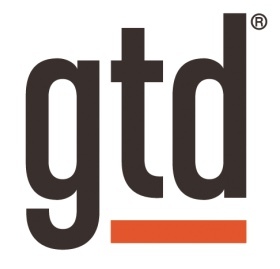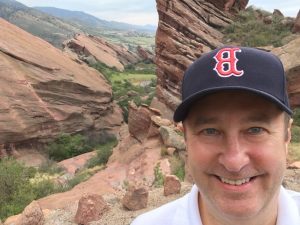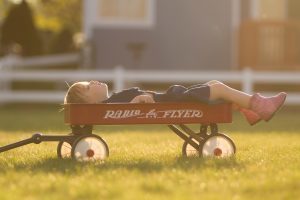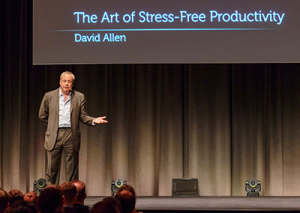David Allen's Blog, page 41
June 11, 2018
GTD Setup Guides
 Hello GTD practitioners! We wanted to give you an update on the current GTD Setup Guides available and what’s in our queue for development. If you’re new to these guides, they are the official GTD software setup guides from the David Allen Company to give you step-by-step coaching on applying GTD to some of the best software tools out there.
Hello GTD practitioners! We wanted to give you an update on the current GTD Setup Guides available and what’s in our queue for development. If you’re new to these guides, they are the official GTD software setup guides from the David Allen Company to give you step-by-step coaching on applying GTD to some of the best software tools out there.
We currently have GTD Setup Guides for:
Todoist
Trello
Wunderlist
OmniFocus 2
Outlook for Windows
Outlook for Mac
iPhone/iPad
OneNote for Windows
Evernote for Windows
Evernote for Mac
Lotus Notes
Google Apps for Desktop
Google Apps for Android
You can see samples of the Guides and purchase them here.
On our current projects list or on our list for future development:
Things for Mac desktop (coming soon!)
Nirvana
Asana
Microsoft To-Do
What are we missing? What Guide should we write next? (No promises, as every tool has to pass our rigorous vetting process, but we’re always open to suggestions!)
The post GTD Setup Guides appeared first on Getting Things Done®.
June 6, 2018
Suzanne’s GTD Story
 Your name:
Your name:
Suzanne Hawes
What do you do for work?
Chief Human Resources, Paya Inc
Where do you live?
Ashburn, VA
How did you hear about GTD?
I was working at SC Johnson in Racine, WI. The training department needed some guinea pigs for a GTD program they were planning to roll out. I’m always looking for hacks to be more productive and so I said, absolutely, count me in! Even read the book before the class so I could get even more out of it.
How long have you been practicing GTD?
12 years
How has GTD made a difference in your work and life?
I truly get more stuff done now. People think I have a great memory, but really I just always try to keep my lists up to date, writing things down as soon as it occurs to me so I won’t forget. Even if I don’t do it for weeks or longer, I still know it’s “on the list”.
What areas of GTD are you doing really well (or at least better than you used to)?
List management. Two minute rule. Inbox to zero (or anything less than 20 is awesome, because as soon as I empty my inbox 15 emails flow in so I never TRULY get to zero) – note, this is my work email. For personal email, see the next question.
What areas of GTD would you like to get even better at doing?
Weekly Review. Cleaning out the capture tools at home. Filing – I still let it all build up and then file for an hour or so when my drawer gets full. Keeping an up to date list of projects (would probably do better if I’m doing a regular Weekly Review).
What is one piece of advice you would give to someone just starting out with GTD?
Don’t try to be good at all of it at once. Start with a few basic lists. Don’t over engineer it. Limit your capture tools. Find the list system that works for you. I change systems every year or so just to see if I like something better. Sometimes I want an electronic tool, sometimes I just enjoy the feel of writing pen and paper. Right now I’m using Todoist.
The post Suzanne’s GTD Story appeared first on Getting Things Done®.
May 18, 2018
New! GTD & Trello Setup Guide
 We’re excited to announce the release of our new GTD & Trello Setup Guide. This Guide will show you how to:
We’re excited to announce the release of our new GTD & Trello Setup Guide. This Guide will show you how to:
– Understand the fundamental GTD best practices
– Optimally configure Trello in the way we have found works best for GTD
– Integrate your actionable email
– Create project and next actions lists in Trello
– Create useful reference lists
– Use Labels and Filters effectively
… and more
Get the guide here or see a sample of GTD & Trello
Not a Trello user? It’s just one of many guides we offer for implementing GTD. We also have guides for Outlook, Todoist, OmniFocus, iPhone/iPad, Evernote, Google apps, and more. See all of our GTD Setup Guides here.
The post New! GTD & Trello Setup Guide appeared first on Getting Things Done®.
May 10, 2018
What Gets in the Way of Being Productive?
 A typical question I get is, “What’s the one thing that we do that gets in the way of us being productive?” It’s not one thing, but five, all wrapped together: People keep stuff in their head. They don’t decide what they need to do about stuff they know they need to do something about. They don’t organize action reminders and support materials in functional categories. They don’t maintain and review a complete and objective inventory of their commitments. Then they waste energy and burn out, allowing their busy-ness to be driven by what’s latest and loudest, hoping it’s the right thing to do but never feeling the relief that it is.
A typical question I get is, “What’s the one thing that we do that gets in the way of us being productive?” It’s not one thing, but five, all wrapped together: People keep stuff in their head. They don’t decide what they need to do about stuff they know they need to do something about. They don’t organize action reminders and support materials in functional categories. They don’t maintain and review a complete and objective inventory of their commitments. Then they waste energy and burn out, allowing their busy-ness to be driven by what’s latest and loudest, hoping it’s the right thing to do but never feeling the relief that it is.
I merely just bottom-lined the worst practices for the five steps of managing workflow—capture, clarify, organize, reflect, and engage. None of these is the ONE problem. Obviously most people keep stuff in their head, which short-circuits the process to begin with. But lots of people write lots of things down—they just don’t decide the next actions on them, which keeps the lists operationally dysfunctional. But even if they think about the actions required, they don’t organize the reminder somewhere that they’ll see when they are in the context to do the action. And even if they did that in a burst of productivity inspiration, most let their systems quickly become out of date and inconsistent. And without the care and feeding and constant utilization of their objective executive thinking tools, that function slips back into psychic RAM. Life and work become reactive responses instead of clearly directed action choices.
So, what do we need to do instead?
It’s a combined set of the five best-practice behaviors. Get everything out of your head. Make decisions about actions required on stuff when it shows up, not when it blows up. Organize reminders of your projects and the next actions on them in appropriate categories. Keep your system current, complete, and reviewed sufficiently to trust your intuitive choices about what you’re doing and what you’re not doing at any point in time.
I suppose I could have gotten it even simpler: “Focus on positive outcomes and continually take the next action of the most important thing.” But who doesn’t know that? Consistent implementation of that principle, totally integrated with every aspect of our life, is the big challenge. And that’s easier than you’re afraid it is, but not as easy as it sounds.
–David Allen
This essay appeared in David Allen’s Productive Living Newsletter. Subscribe for free here.
The post What Gets in the Way of Being Productive? appeared first on Getting Things Done®.
May 9, 2018
Mark’s GTD Story
 Your name:
Your name:
Mark Jantzen
What do you do for work?
I’m a Senior Investment Manager with Fidelity Investments
Where do you live?
Denver, Colorado
How did you hear about GTD?
I attended a David Allen seminar at Fidelity before he called it GTD. I believe it was MAP – Managing Actions & Projects. Obviously read the book when it was published.
How long have you been practicing GTD?
Since 1990
How has GTD made a difference in your work and life?
In many areas it was easier & truly stress-free productivity. But that ease has also broadened my perspective to other areas in my life. So it really is about control & perspective.
What areas of GTD are you doing really well (or at least better than you used to)?
Complete projects & next actions lists
What areas of GTD would you like to get even better at doing?
Reading & journaling
What is one piece of advice you would give to someone just starting out with GTD?
Really get the outcome & next action thinking. Do that part well.
The post Mark’s GTD Story appeared first on Getting Things Done®.
May 8, 2018
Episode #40: Best Practices of Email Communication
In this podcast, Coach Kelly Forrister focuses on the best practices of email communications with others, including appropriate use, writing effective subject lines, creating agreed upon response times, reply to all and more.
Listen Now
Subscribe or Download
iTunes
Stitcher
Libsyn
Google Play Music
Spotify
SoundCloud
The post Episode #40: Best Practices of Email Communication appeared first on Getting Things Done®.
May 7, 2018
Why Getting Organized Usually Hasn’t Worked
 I had another BFO the other day (that’s a Blinding Flash of the Obvious): one of the reasons most people are to some degree allergic to “getting organized” is the consistent lack of success they have experienced over the years with how they’ve approached the whole process of to-do lists.
I had another BFO the other day (that’s a Blinding Flash of the Obvious): one of the reasons most people are to some degree allergic to “getting organized” is the consistent lack of success they have experienced over the years with how they’ve approached the whole process of to-do lists.
The reason those lists have not worked is because they were an attempt to compress very different and relatively sophisticated and discrete functions into one event and context. If you try to make something too simple, it will make it seem even more complex and difficult. Yes, we’ve all been up against the wall from time to time of too many things screaming at us in our head, and we got temporary relief from “making a list.” But we’re in a very different and more multifaceted world than that band-aid can manage as an on-going procedure.
When most people sit down to write one of those lists, they are actually trying to combine at one time all five of the phases we have defined for mastering workflow: collect, process, organize, review, and do. They are simultaneously attempting to grab things out of their mind, decide what they mean, arrange them in some logical or meaningful fashion, jumping immediately to an evaluation of each against each other and deciding what they need to do “most importantly.” One is usually rewarded with a short-term payoff of the crisis of confusion relieved, but left with still a vague sense of gnawing vulnerability to what’s uncaptured, unprocessed, unorganized, unseen, and underestimated.
We have discovered over many years of research and coaching that these phased aspects of workflow management are optimally done as separate activities. You need to collect everything on your mind first, little or big. Then you need to assess each individual particle of that inventory: is it actionable? If so,what’s the outcome? What’s the next action? You then need to organize all the results of that thinking into appropriate categories. At that point you can clearly review all your options of what to do, and make the best choices, given all the criteria for making those decisions (time, energy, context, priorities, etc.) Managing yourself is simple, but it is not simplistic.
–David Allen
The post Why Getting Organized Usually Hasn’t Worked appeared first on Getting Things Done®.
May 4, 2018
GTD and stress
How do you unhook from the pulls and pressures of your world? It would be nice if you could just shut your door, or go into the garden, and the harpies in your mind—all the niggling things to do and deal with—just went away. Or, if you could just finally get it all done, so there was nothing left to contend with. Neither is likely to happen.

Your freedom will not come from trying to ignore all the “stuff” or by trying to complete everything—it requires truly detaching from it. But how do you do that? By getting it all out of your head, and reflecting on it all, appropriately.
–David Allen
The post GTD and stress appeared first on Getting Things Done®.
April 14, 2018
How things get done

It’s all connected. You can’t really define the right action until you know the outcome you’re after, and your outcome is disconnected from reality if you’re not clear about what you need to do physically to make it happen. You can get at it from either direction, and you must, to get things done.
–David Allen
The post How things get done appeared first on Getting Things Done®.
March 29, 2018
The Power of Imagery
 Imagery is powerful. Consciously exercising the direction of your imagery is a hallmark of mastery—in sports, business, or frankly any aspect of your life. Mental pictures, combined with rich emotional texture, have proven to be highly effective tools for enhancing perception and performance, whether on the track, in the boardroom, in relationships, or simply your general well-being.
Imagery is powerful. Consciously exercising the direction of your imagery is a hallmark of mastery—in sports, business, or frankly any aspect of your life. Mental pictures, combined with rich emotional texture, have proven to be highly effective tools for enhancing perception and performance, whether on the track, in the boardroom, in relationships, or simply your general well-being.
We are always imaging to ourselves. Research has shown that we talk to ourselves on an average of 300 to a thousand words per minute. It has also shown that for the typical adult over 75% of that self-talk is negative. We are also always going towards something. Our very nature is goal-seeking and directional. We are constantly being pulled toward whatever we focus on, whether we like it or not.
Controlling that inner dialogue (and the automatic vectors it creates) to produce more positive experiences, more consistently, is the purpose of image management.
Numerous techniques are available for assisting directed focus, and they all essentially do the same thing: hold your mind steady on a specific picture instead of something else. Different formats may be more or less comfortable for you to use in certain situations about certain things. “A comfortable living environment that supports my work, health, and creativity” may seem more appropriate as an ideal scene than a goal. “Launch the new marketing program” might be more of an objective for you than an intention. But they all perform the same function of re-grooving your neural patterns.
Consistent engagement with the desired pictures is a big key. One affirmation of being at your perfect weight may not perceptibly alter your self-image. Repetition, especially when coupled with dynamic emotional content, seems to be critical if you want to effect a change in your internal set points.
It’s challenging to be consistent with a focus on still unfamiliar images and experiences, however. Often we get inspirations in flash moments or while we are in a particularly good mood, and those don’t last. So, to be really clever, when you are feeling particularly intelligent and inspired, grab that idea, picture, or intention—express it and park it somewhere that you’ll revisit almost in spite of yourself. One of the great challenges of life is that when we most need our own inspirations, we don’t feel like it! When we’re down, happy thoughts can be irritating! But if you’re smart enough to realize that, you will build in your own triggers for bootstrapping yourself back toward where you really want to go.
When I’ve been diligent enough to keep track of my visions, my goals, my affirmations, and my hunches, and clever enough to revisit them later on, it has provided a powerful motivation to do more of that kind of structured thinking about what I want. Invariably what I envisioned, though somewhat of a fantasy at the time, came to pass, and often in quite extraordinary ways. What a great reminder—to keep stretching into unknown territory, and to be willing to see myself having, doing, and being things, without the foggiest notion about how to get there.
And, because of how our brains work, if you don’t see yourself doing it, you’ll never see how to do it. So take the plunge—imagine your future before you know the path to get there.
–David Allen
If you want a way cool way to create more of what you want through your imagery, check out the Intention Journal we built in to GTD Connect.®
This essay appeared in David Allen’s Productive Living Newsletter. Subscribe for free here.
The post The Power of Imagery appeared first on Getting Things Done®.
David Allen's Blog
- David Allen's profile
- 1485 followers



